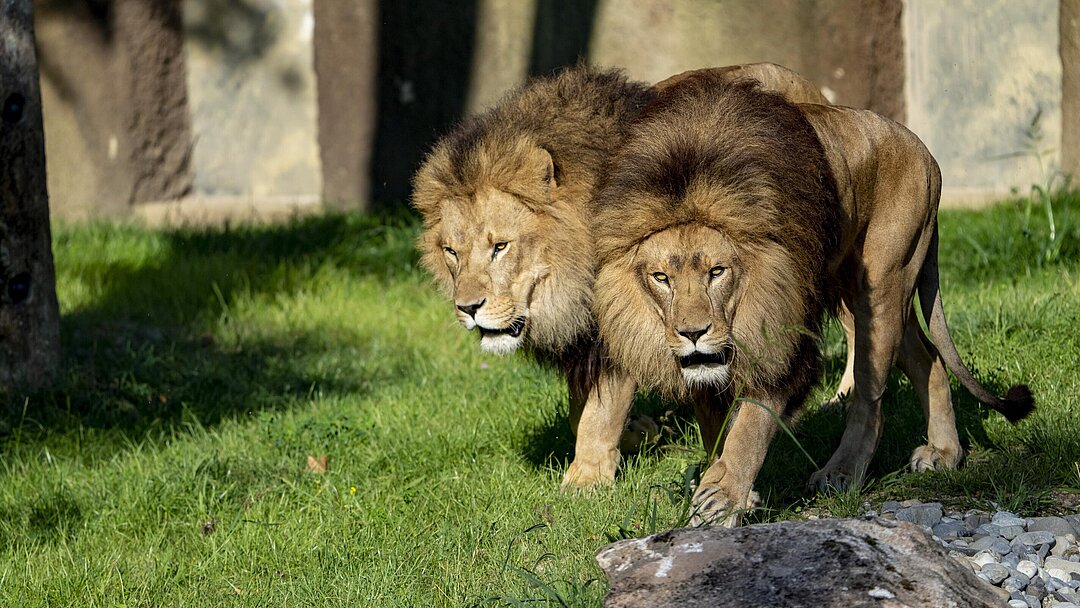
It is well known that big cats spend a large part of the day sleeping and enjoying their favourite spots. This is no different with Max and Benny in their new home at Hellabrunn Zoo. Designed according to the latest findings in behavioural biology, the new lion enclosure in Munich not only offers the two big cats more space, but also a wide range of enrichment activities such as climbing trees, views of the visitor areas and neighbouring enclosures, as well as additional retreat areas. These innovations have given the two lions a whole new living environment for the last three months, where they are now fully settled.
Depending on the weather, the two big cats like to either sunbathe on the resting platform in the southern part of the paddock and watch elk TV. Or when the temperatures are slightly cooler, the animals are sometimes drawn to a sunny area by the glass wall of the Visitor Cave, where guests can get even closer to the lions and intensely experience their smell, body heat and sounds at the newly installed “contact membrane”. Now 11 years old, the two brothers, who are quite mature, also love to pose on the viewing hills, where they show exactly why they are called 'king of the beasts'. Max and Benny are just as impressive when scaling one of the large climbing trees in their habitat and using their unmistakable roar to make it clear to the astonished two-legged viewers who is the master of the house.
"It’s a great pleasure for our many visitors, but also for us zookeepers, to see how comfortable the two male lions feel in their new home. They have shed any reservations about the new habitat since moving in. The two have settled in nicely and have completely taken control of their territory. They also tell us this through their relaxed behaviour and the sense of belonging they have developed for the habitat,” says big cat keeper Quirin Linseisen, who beams every day anew at the sight of Max and Benny in their new enclosure.
Zoo director Rasem Baban sees the new animal house as confirmation that the zoo is on the right track. "We constantly receive positive feedback from our guests, in personal conversations, through numerous comments on social media, but especially at the Lion Talk with our zookeepers. And it’s not just for the design of the new habitat itself, but also for the signage and interactive learning stations, which provide a lot of interesting information about the species, its habitat and its endangerment.”
African lions are listed as endangered in the wild according to the International Union for Conservation of Nature (IUCN) Red List. Their populations on the African continent have declined sharply in recent years. Today estimates of the remaining population range from 20,000 to 40,000 individuals. The lion’s natural habitat has shrunk by 80 per cent. The greatest threats to the species are habitat loss and food scarcity, both of which are largely caused by human activity. Cities and villages are constantly expanding, bringing human and lion ever closer to one another. This human-lion conflict leads to dangerous encounters, during which the big cats are often killed by the locals to protect their livestock and their own lives.